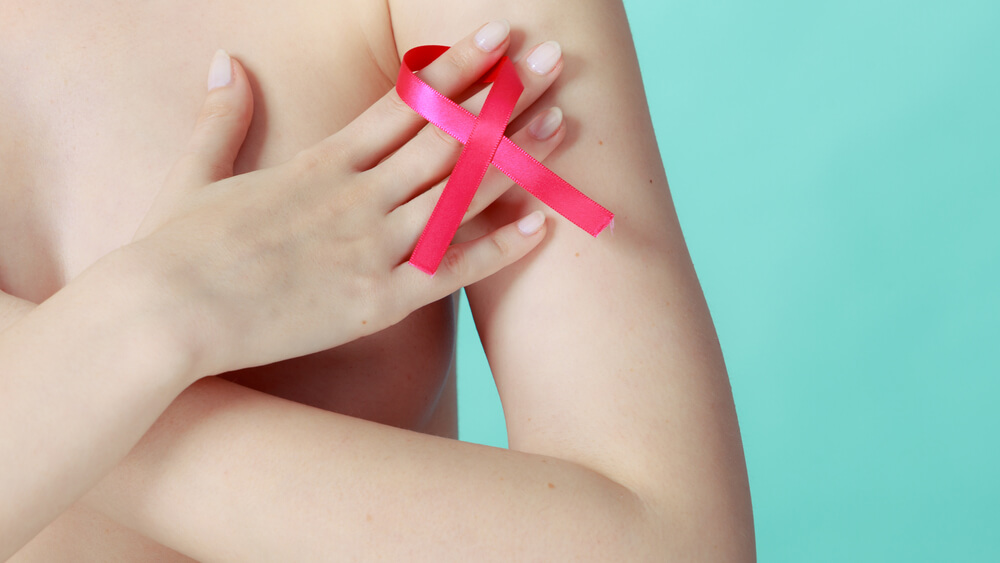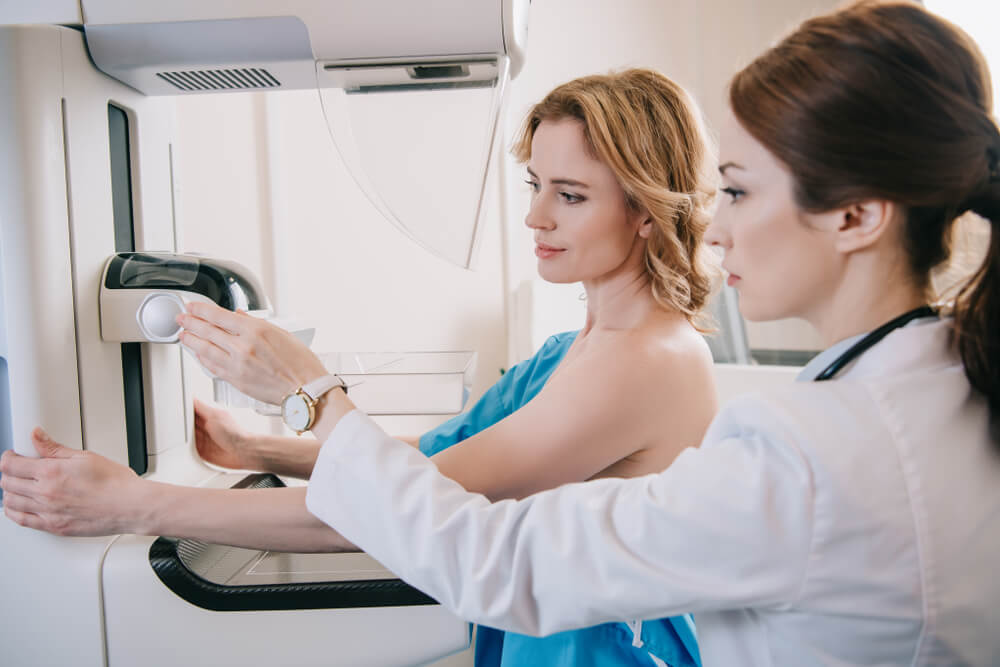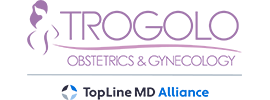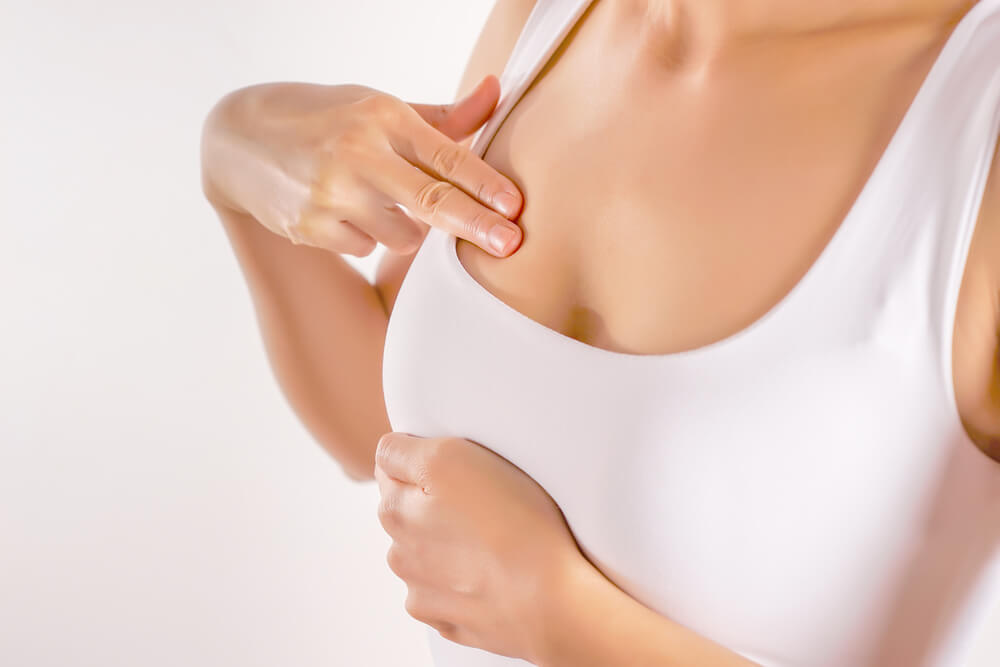Regular screenings and doctor checkups are highly recommended as a potential way to detect cancer early or simply have one worry less about your health. But regular breast self-examination is a great addition to this practice as it allows all women, regardless of their age, to check for unusual bumps and lumps at their own home, completely free. It may not be a full-proof method of cancer detection, but it can definitely contribute to it. In the end, this is a healthy habit that will only cost you a minute of your time, yet it could still make a big difference for your health.
The Importance of a Breast Self-Exam
As you regularly perform a breast exam when you feel comfortable in your own home, you’ll gradually build the awareness of your own breasts – their shape and feel. The more you practice this on your own, the better the chances are to spot an anomaly if one happens to appear. Of course, breast cancer is not the only condition that could cause a change in the appearance and feel of your breasts, but it’s always better to be safe than sorry. That said, even though this practice alone cannot be deemed reliable enough as a cancer detection method, it can still provide women with clear insight into their own breasts so that they can report any unusual change to their doctor as soon as possible, potentially making a huge difference for their health – and life.

How to Perform a Breast Self-Exam
Breast cancer self-exam is not a difficult process. You can do it in the shower, or the bedroom as you’re getting dressed. There are five main steps that you should follow to complete this examination successfully.
- Step 1
Stand in front of the mirror with straight shoulders and your arms resting on your hips. Take a good look at your breasts and inspect their shape, size, and color. In general, your breasts should be evenly shaped with no visible changes or swelling. Of course, not all women have even breasts, which is why it’s important to get a feel of what’s natural for your own breasts so that you know when there’s something different going on. Essentially, you want to look for unusual distortions, rashes, redness, swelling, as well as changes in the nipple area (such as inverted nipple).
- Step 2
Raise your arms above your head while still standing in front of the mirror and inspect your breasts visually in the same manner as described in the previous step.
- Step 3
This particular step involves your checkup of any potential fluids leaking from your breasts while your arms are still up above your head. This fluid can be milky or yellowish, but it can also appear like actual blood.
- Step 4
This step is all about what you can feel. You should lie down for a moment for improved effectiveness. Essentially, you’ll be using your right hand to feel the left breast, and vice versa, the left hand to feel your right breast. Use small circular motions with your fingers close together and gently yet firmly press the breast while circling with your finger pads. Make sure to cover every single area of the breast – from the collarbone to the abdomen and from the armpit to the cleavage. You can choose what type of movement works the best for you. Most women find the up-down and left-right movement to be very practical, but you can also start making larger circles from your nipple as a center.
- Step 5
The last step involves feeling the breasts as described previously in the sitting or standing position. Some women simply skip the lying down and go straight to feeling up their breasts in the upright position, but you should still take the time to examine them while lying down. As mentioned, it’s easier to perform self-examination in this position when the body is wet/slippery, which is why most women opt to do it in the shower.
What to Do If You Find a Lump
In case you’ve actually felt a lump in your breast make sure not to panic immediately. It’s not uncommon for women to develop benign lumps in their breasts over time, not to mention that these lumps could be a result of hormonal changes or injuries. However, you should still contact your doctor if the lump feels really unusual so that they can proceed with a thorough and professional breast examination procedure.
This particular examination often involves a complete physical exam of the area together with the breast imaging tests. Ultrasound is the most common type of these tests, but the doctor might also suggest a mammogram if you’re over 30 and not pregnant/breastfeeding. In case you need to go through further testing, you can probably expect MRI imaging (magnetic resonance), MBI (molecular breast imaging), and possibly a biopsy.
Don’t hesitate to ask your doctor everything that you want to know about the condition of your breasts. Even if the lump in question is nothing serious, feel free to learn everything you can about how and why it came to be.

Make It a Routine
As mentioned, the more you examine your breasts, the more familiar you’ll get with their feel and look, as well as the surrounding areas such as your armpits. And if you keep at it regularly, you’ll manage to create a routine out of it and successfully add breast self-examination to your breast cancer screening. Essentially, regular breast self-exam means inspecting your breasts once a month.
It would be best to pick a day to do this, a couple of days post your period. In that respect, you can add these regular monthly checkups to your professional annual breast exam and feel more comfortable in your own body. In case you have trouble remembering to do a self-exam, you can set up a reminder in your phone for a specific date every month, or even start a journal describing what you could feel and see.
Keep in mind that it’s normal for breasts to change and feel a bit different at different points of the menstrual cycle. This is precisely why it’s better to do a self-exam a couple of days after the period is over as there is minimal chance of hormonal swelling and lumps.
Going to a doctor for breast examination is not an easy feat for every woman, which is precisely why it’s crucial that you find a gynecologist that’s professional, kind, friendly, honest, and trustworthy. In case you’re interested in the best gynecologist in Jacksonville FL, you can definitely count on our expert team at Trogolo Obstetrics and Gynecology.
The latest technology and methods together with extensive experience and friendly demeanor of the staff, make Trogolo Obstetrics and Gynecology a go-to clinic for all women looking to improve their health and well-being. We pride ourselves on delivering the safest, most effective treatment options available to our patients. What’s more, you can trust us on a range of different treatments and services, from gynecological and breast exams, cancer screenings, menopause treatments, and vaginal disorders to biopsies, IUD, infertility evaluation, minimally invasive surgery, and more. Don’t hesitate to give us a call if you have any questions.


